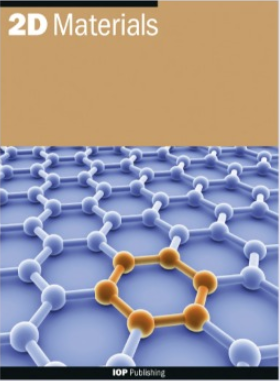Reduced graphene oxide-modified electrodes via fused deposition modeling 3D printing for hydrogen peroxide sensor
IF 4.3
3区 材料科学
Q2 MATERIALS SCIENCE, MULTIDISCIPLINARY
引用次数: 0
Abstract
Fused deposition modeling 3D printing provides a cost-effective and streamlined method for producing electrochemical sensors, overcoming the challenges associated with material selection, complex fabrication processes, and reproducibility issues. This study introduces an innovative approach utilizing a dual-printer setup to simplify the manufacturing of sensor electrodes. A critical enhancement in this process is the surface modification with reduced graphene oxide (rGO), which not only improves the electrochemical characteristics but also induces a wrinkled structure on the 3D printed surface. These wrinkles significantly increase the surface area, directly boosting the electrode’s electrochemical performance. Comprehensive characterization of the electrode surfaces, both before and after rGO modification, demonstrates a substantial increase in sensitivity, with a fortyfold improvement observed in hydrogen peroxide (H2O2) amperometric measurements. This breakthrough paves the way for advanced applications in 3D printed electrochemical sensors.通过熔融沉积建模 3D 打印技术将还原氧化石墨烯修饰电极用于过氧化氢传感器
熔融沉积建模三维打印技术为生产电化学传感器提供了一种经济高效的简化方法,克服了与材料选择、复杂制造工艺和可重复性问题相关的挑战。本研究介绍了一种利用双打印机设置简化传感器电极制造的创新方法。该工艺的一个关键改进是使用还原氧化石墨烯(rGO)进行表面改性,这不仅能改善电化学特性,还能在 3D 打印表面形成褶皱结构。这些皱纹大大增加了表面积,直接提高了电极的电化学性能。对电极表面进行的全面表征(包括 rGO 修饰前后)表明,电极的灵敏度大幅提高,过氧化氢(H2O2)安培测量的灵敏度提高了 40 倍。这一突破为 3D 打印电化学传感器的先进应用铺平了道路。
本文章由计算机程序翻译,如有差异,请以英文原文为准。
求助全文
约1分钟内获得全文
求助全文
来源期刊

2D Materials
MATERIALS SCIENCE, MULTIDISCIPLINARY-
CiteScore
10.70
自引率
5.50%
发文量
138
审稿时长
1.5 months
期刊介绍:
2D Materials is a multidisciplinary, electronic-only journal devoted to publishing fundamental and applied research of the highest quality and impact covering all aspects of graphene and related two-dimensional materials.
 求助内容:
求助内容: 应助结果提醒方式:
应助结果提醒方式:


